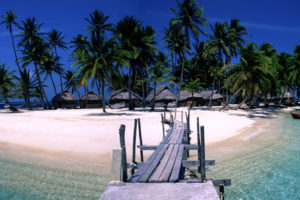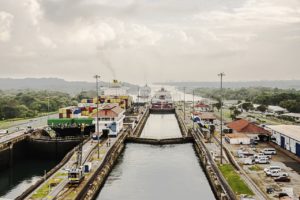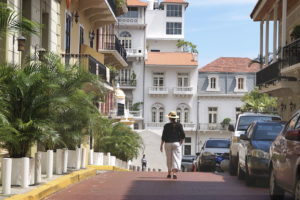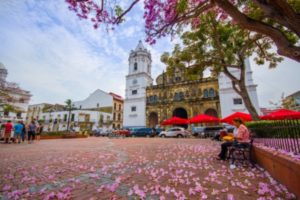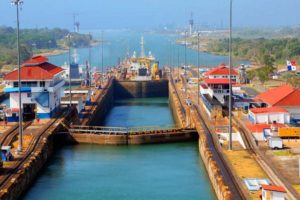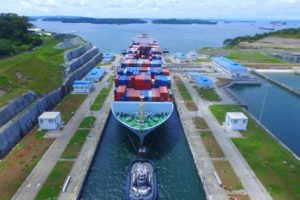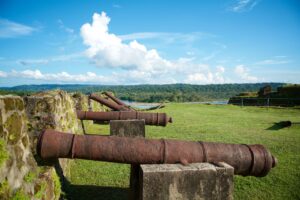Portobelo was once the largest Spanish port in Central America. From Peru gold and treasures from the east entered Panama City and transported overland by mule to the strengths of Portobelo. During the annual trade show, galleons laden with goods from Spain came to trade gold and other New World products.
However, as Nombre de Dios, Panama and San Lorenzo Fort, Portobelo was the target of constant attacks by English pirates and privateers.Considering the fact that the city was destroyed several times throughout its history, it’s remarkable that most of the colonial fortresses remain standing.
The city teems with life every October 21 for the Black Christ Festival, one of the most vibrant country and spiritual celebrations.
San Lorenzo Fort was built by the Spaniards to protect the mouth of the Chagres River which was extremely important to the conquistadors to transport gold from Peru and silver from Bolivia to the coast of the Caribbean. From the city, the treasures were transported by a short path and then accross the Chagres River to the Caribbean Sea and from there to Spain.
For these reasons, this vital trade route was guarded by fort on a cliff. The historical importance of the fort has been recognized by international organizations such as UNESCO and in 1980 the fortress and nearby fortifications were declared World Heritage Site.
Panama la Vieja or Old Panama is the name used for the architectural remains of the Monumental History of the first Spanish city founded on the Pacific coast of the Americas by Pedro Arias de Avila on 15 August 1519. This city was the starting point for the expeditions that conquered the Inca Empire in Peru in 1532 and was also a stopover point of one of the most important trade routes in the history of the American continent. The importance of this trade route led to the creation of the famous fairs of Nombre de Dios (God's name) and Portobelo, where most of the gold and silver that Spain took from the Americas was exchanged.
The fire caused by Governor Juan Perez de Guzman and theft and looting caused by the pirate Henry Morgan in 1671 led to the relocation and construction of a new city in 1673, which today is known as the Casco Viejo or Colonial Panama. Old Panama is one of the most accessible places in the urban city and can easily visit while walking along cobblestone streets. A new archeological project was recently started on the site to protect and restore the ruins. Project management is handled by a foundation that is a joint force between the government, a civic club and private enterprise.
Panama la Vieja (Old Panama) was declared a Historic Monument Set by Law 91 of December 22, 1976.
Casco Viejo is the historic center of Panama City and is a peaceful and charming district of narrow streets adorned with balconies adorned with flowers in houses two or three floors. At its end is the Plaza of France, a monument to the French builders who began the Panama Canal and the lovely French Embassy. Around the monument visitors have a view of the Causeway, the Bridge of the Americas and part of the metropolitan city of Panama.
There are some excellent museums in Casco Viejo, as the Canal Museum, which traces the history of Panama as the route connecting the Atlantic and Pacific from pre-Columbian times to the presents. Next door is the National History Museum and the former Old Cathedral,with gleaming towers inlaid with mother-of-pearl. Nearby is a small museum dedicated to religious art, where the former of the monastery of Santo Domingo, where visitors can see the famous Flat Arch (Arco Chato), who allegedly helped convince engineers that Panama was earthquake proof is. In the Cathedral of San José a few blocks away is the beautiful Golden Altar, carved wood and laminated with gold leaf. Another beautiful building in Old Town is the Presidential Palace, which can go from Monday to Sunday.
